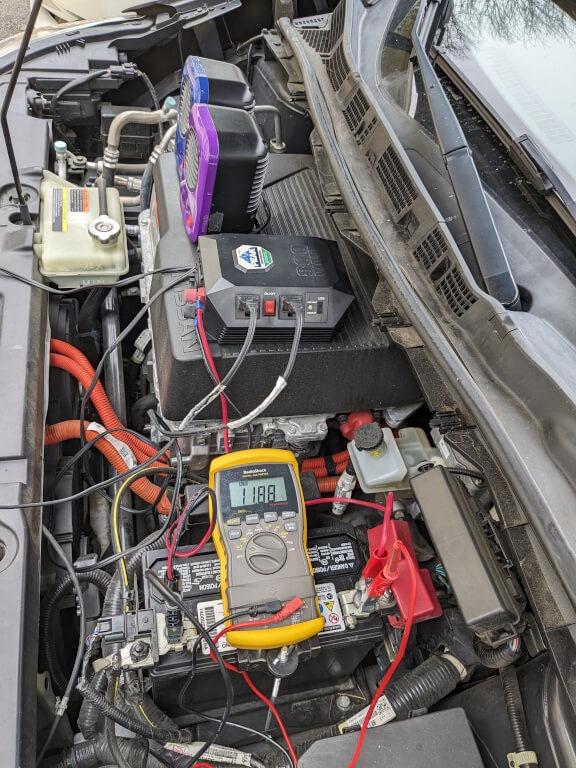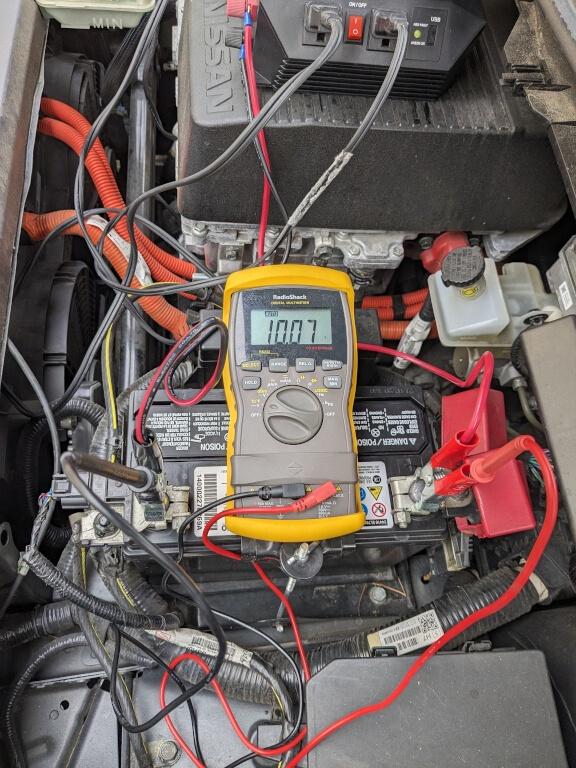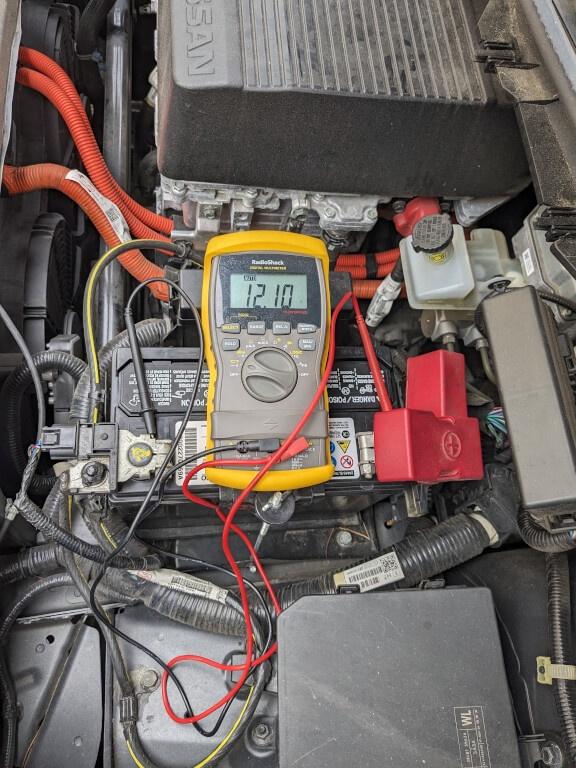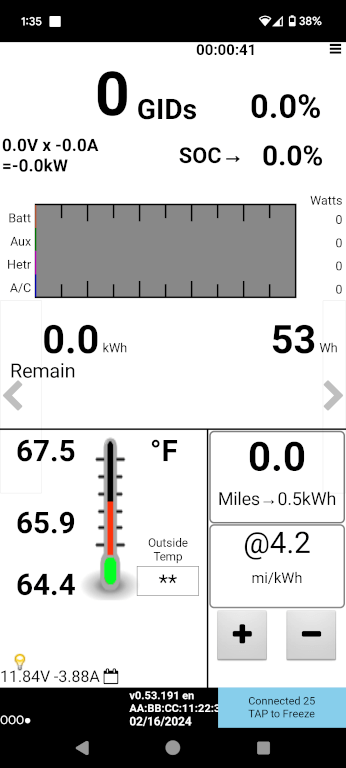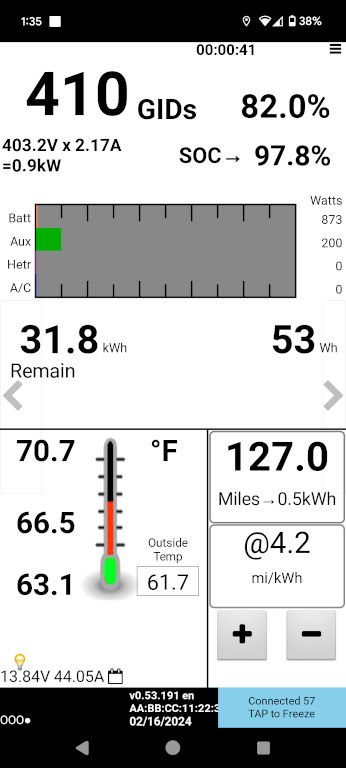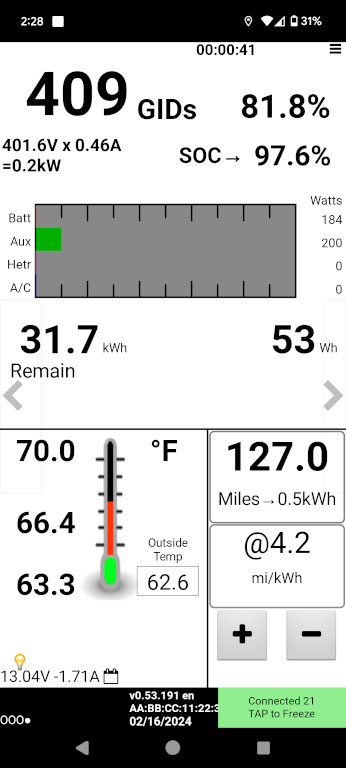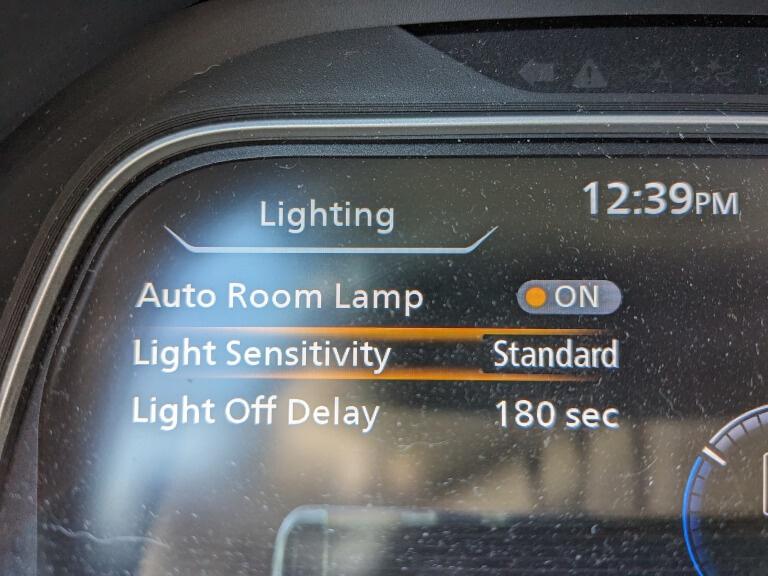I will NEVER use some stupid Lithium battery to replace a Lead Acid in a vehicle designed to charge lead acid batteries.
The system is set up to properly charge a Lead Acid Battery... LiPos or whatever rando
thing you want to put in there.. has different charge voltage/current requirements. Clearly the computer is very sensitive to battery condition... It CAN and It WILL disable the car if it isn't
seeing the expected battery conditions.
The smart thing is to use an AGM Deep Cycle Sealed 12v battery.
The dumb thing is to think some Chinese BMS built into your lithium thingus is safe, adequate, compatible, or reliable. Unless you believe in fairies. then do it ~!
I try not to argue with the opinions here when it is subjective. I will present counter-arguments in the presence of evidence though. The first claim that the Leaf 12V charging system is setup to only work with FLA batteries is probably not correct. No one that I am aware of has the engineering documents for the Leaf, so none of us know exactly what Nissan intends to do exactly, but we can infer based on the evidence of what we can measure and observe ourselves.

For starters,
if the Leaf was intended to only work for FLA batteries, it would not be floating the 12V battery at
13.0V To properly take care of the FLA, the voltage would need to float between
13.5V and
13.62V Most Manufacturers recommend
2.25V to
2.27V per cell when the battery is "warm", like room temperature warm. When the battery is colder, the float voltage has to be higher to protect it's capacity. When the battery is hot, the float voltage has to be lowered, again to protect capacity. AGM batteries can float at a lower voltage, usually the recommended range is
13.2V to
13.6V. But, again the Leaf is not doing this. So, the Leaf fails on that compared to a typical ICE vehicle alternator that is keeping a constant
+14V going on the battery at all times.
Next the Leaf never fully charges a FLA battery because it is charging based on a combination of voltage and power readings made by the battery current sensor. That is the logical way to protect the battery from being over-charged because the Leaf open voltage is
15V. This works fine when a FLA battery is brand new. As the FLA battery ages, the amount of power it can recharge with decreases. This means there is a way to get both a high charge voltage and small charge current that the system can not account for, instead it makes a best guess on the state of charge; of the 12V battery. Because there is no system counting power in and out of the 12V system, the Leaf has no idea if the 12V battery is actually fully charged. It's very easy to blast a FLA battery to
14.4V with 100 amps of power but there is a point where the amount of power going in will have to be decreased to prevent the voltage from climbing too high and causing capacity damage. Again, the Leaf is guessing, it does not know exactly how much power was in the FLA battery and it does not track how much it is putting in. It is working only on the voltage and current. The Leaf does not try to keep a 12V battery topped off like a battery maintainer would.
Given the above statements, the Leaf wasn't designed to only work with FLA or AGM batteries, it was designed to be compatible with them. Otherwise, why go through all the coding to make such a complicated charging system? Why not just blast
+14V and be done with it? The Leaf could easily do that and it would be a much simpler system. The reason is safety related. Most vehicle alternators max at 100 amps. More of an average, you can find plenty that do less or more I'm sure. They are tuned to
+14V and have the added benefit that the battery itself is the current limit along with the physical load on the alternator pushing back. The whole system has over a century of research and development to match up FLA batteries to ICE vehicle usage quite well.
Let's think about an engineering perspective on the Leaf. It's 200x and the Leaf needs a 12V power source to run everything except the drive motor and HVAC. The only viable technology that has years of testing and mass production to boot is FLA batteries. Seems like an easy choice, you only need it to switch on the main relays and then the HV battery takes over from there. Sure, now how do you charge the 12V battery back up? Well, use some power from that fancy 12V system you created. Ok, but how do this in a safe way? You can't just blast in +150 amps into the battery everytime. What if the battery was freezing? What if the battery has capacity damage from age or manufacturing issues? You need a way to control how much power you are forcing in. You also need to run all your 12V accessories without having them fail from voltage that is too high or too low. Nissan didn't built two "12 Volt" systems, they are using the same one to do both. That makes it literally impossible to have something that is designed around a certain battery chemistry and yet also runs the accessories at the same time with a regulated and predictable power level. That's why the whole system is a compromise at 13.0V. It keeps the accessories at a consistent power level and it is close to, but not quite there for keeping a 12V battery at the maximum state of charge. Nissan uses some workarounds like trying to get the 12V battery to 14.4V as fast as it can before leveling off at 13.0V but it's usually not enough time to keep any FLA or AGM battery at the maximum state of charge. Just like it's bad to leave a Lithium battery at 100% SOC for long periods of time, the opposite is true for FLA / AGM batteries, they need to be at 100% SOC all the time.
Where does LiFePO4 fit into all of this? It has the advantage of a higher operating voltage nominal voltage of
12.8V instead of
12.0V for the FLA / AGM family. That means it takes a higher voltage to damage the battery capacity,
+14.7V or higher to be specific for most manufactuers. The Leaf doesn't have an issue with over-charging the 12V battery though, its problem seems to be not keeping a high enough state of charge. Again, LiFePO4 to the rescue, as part of the Lithium battery family, it also does not need to be kept at 100% state of charge all the time, it's operating range is 20% on the low end to 80% on the high end for the state of charge, that is where it functions best. It also has thousands more charge cycles than the Lead battery family, thus extending its life much longer. It also has a lot less self-discharge than the Lead family of batteries. Finally, most modern drop in 12V starter battery replacments using LiFePO4 have a BMS protection board that limits how much charging or discharging the battery can take to further preserve life and to act as a safety backup.
To claim that using a LiFePO4 is going to cause you issues with your Leaf or leave you stranded flies in the face of actual real world evidence from it's users both here on this forum and elsewhere around the world. The opposite is actually true, Leaf owners using a LiFePO4 have reported reliability that puts the FLA / AGM batteries to shame. It seems obvious that the design of the 12V system in the Leaf wasn't created specifically for 12V LiFePO4 batteries, but they just happen to operate very well in a Leaf because of its 12V charging limitations that disproportionally affect the Lead Battery family more than the Lithium battery family.
Using a LiFePO4 isn't a cure-all for the strangness that is the Leaf 12V system, but it seems to be able to operate best in that environment. That doesn't mean crappy LiFePO4 don't exist, it just means that with anything else in life, you get what you pay for. If I buy a cheap FLA or AGM it might only last a few years while a high quality version is able to live on for much longer. I know there are places that sell Lead Family batteries that can beat the OEM Nissan battery to death in reliability and lifespan just like the 12V LiFePO4 battery I chose +9 years ago continues to work today across (2) generations of Leaf syles and has never let me down in the coldest weather we get where I live 0F (-17.7C).
Finally, despite all the talk about the limitations of LiFePO4 in terms of performance and temperature, what often seems to be ignored is that FLA and AGM are also limited in cold weather performance. Most manufactures don't recommend charging them if the battery temperature is below 32F (0 C) because of (surprise

), capacity damage. At least the Leaf will reduce charging current to a trickle when it detects freezing outdoors temperatures, do you think a car alternator does that?


